Tourism in Serbia
Tourism in Serbia is officially recognized as a primary area for economic and social growth.[1] The tourism accounted for approximately 6% of GDP in 2015.[2] Tourism in Serbia employs some 75,000 people, about 3% of the country's workforce.[1]
In recent years Serbia recorded a significant increase in the number of foreign tourists (approximately 10-15% growth per year). Major tourist destinations include cities and ethno-villages, ski resorts, spas and health resorts, nature parks and reserves, archaeological sites, religious architecture and music festivals.[3]
Tourist destinations
City-break destinations
Belgrade
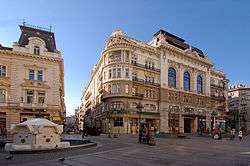
Belgrade is a capital city tailor made for a weekend exploration. An exciting mixture of rich and diverse history, culture, architecture and urban spirit. With some of the most attractive locations, Belgrade Fortress – the oldest cultural and historical monument, Skadarlija–bohemian quarter in the city centre, Knez Mihailova Street; Old and New Palace, Federal Parliament, Church of Saint Sava, Zemun and many others, Belgrade makes the cultural centre of Southeast Europe.

Confluence of Sava and Danube is a natural oasis in the heart of a modern city, and that very spot next to the Victor statue is the most beautiful lookout in Belgrade. River banks never sleep: on boat restaurants and cafes visitors can have a cup of coffee, eat a fish speciality, listen to music and have fun. Zemun is romantic and poetic with narrow cobblestoned streets, promenade by the Danube, barges-cafés and the famous Gardoš Tower.
New epicenter of urban culture, entertainment and lifestyle is Savamala, with trendy restaurants, clubs, bars, galleries.. Modern design scene gave popular hotspots: Belgrade Design District, KC Grad, Mikser House, Supermarket Concept Store and urban shopping areas, which continuously attract international attention with local design products and brands. Belgrade is a very easy to go around city: all the essentials for a city break are within walking distance, and further sightseeing is easily done by trying some of our sightseeing tours.
Novi Sad
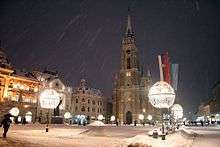
The City of Novi Sad has the necessary diversity of a modern tourist center that aims to and has the ability to put itself on a world tourist map. It is located on the Danube, on the intersection of the most important roads, near the mountain of Fruška Gora with 17 culturally and historically significant monasteries, and it is surrounded by typical Vojvodinian ranches. In addition, there are 17th-century Petrovaradin Fortress, appealing old city center, numerous museums, prestigious Novi Sad Fair, as well as many world famous festivals and events.
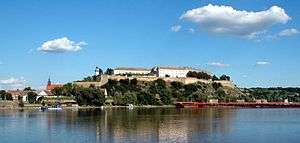
The Petrovaradin Fortress, covering an area of 122ha, built in the 17th and 18th century, it represents a cultural-historical monument. Located within the fortress are the Museum of the City of Novi Sad, the Academy of the Arts, the Observatory as well as the Archives of the City, also it is at this very place, traditionally, in the month of July, that the EXIT Music Festival takes place, proclaimed to be the best in Europe.
The architecture of the city represents a mixture of several different styles.
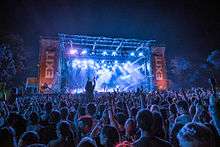
The oldest house “At the White Lion” was built in long ago 1740. The city streets boast several beautiful palaces from the end of the 19th and beginning of the 20th century: “Tanurdzićeva”, “Menratova”, “Vatikan”, “Klajnova”, etc. as well as sacral architecture belonging to different confessions.
Fruška Gora with its national park of about 25.000ha, where 17 Orthodox monasteries can be found (founded in the period from the 15th to 18th century as pious endowments of Serbian despots), with forested areas, rare plant and wildlife, nature reserves, numerous lakes (14 in total), mountain trails (about 800km of mаrked paths), complete with mountaineers homes and a hotel, is located partly in the Novi Sad district and represents one of the tourist destinations with the most content in the out lazing areas of the Danube.
Niš
The city of Niš, in the southeast of Serbia, is one of the oldest cities in Europe and has long been an important bridge between East and West. Two millennia ago, it was used as a link between modern-day Belgrade and Istanbul. In a historical sense, it is most famous for being the birthplace of the Roman Emperor Constantine the Great.
It is a city with a chaotic history spanning several centuries – much of it dark, but undeniably historically significant. Nis is a great city to learn about Serbia’s history, and is a good home base from which to see some of the country’s best ancient ruins.

In the heart of the city is the Nis Fortress. This 18th century construction is situated along the shore of the Nišava River, atop the ruins of the ancient Roman military camp, Naissus. The fortress was built during Turkish rule (1386 – 1878) as was regarded as one of the most beautiful buildings in the Balkans. The Nis Fortress was used as an armory, hammam (bath), and prison. Much of the original building is still standing. It is a free attraction where people are welcome to stroll the paths and check out the remaining constructions within. Inside there are restaurants, ice cream vendors, and stages where the main programs of Nišville Jazz Festival are held each year in August.
The bohemian quarter of Nis is Kazandžijsko sokatče, which means “Tinkers Alley” or “Coppersmith Alley,” is situated in the old town, on what used to be a street lined with craft workshops. Today it forms a pedestrian-friendly zone of restaurants and kafanas. Several of the buildings here date bath to Turkish rule.
Skull Tower (Braće Tasković bb),the name of the tower is not a metaphor. This is actually a tower made of skulls, about 3 meters tall, which was built by the Turks on the order of Khurshid Pasha. The skulls are those of Serbs killed by Ottomans during the Battle of Čegar during the First Serbian Revolution in 1809. The original tower had 952 skulls and was placed on one of the roads leading into Nis as a warning to the Serbian people. Nowadays the tower contains only 58 skulls. You can visit the tower inside of a chapel that dates back to 1892.
Subotica
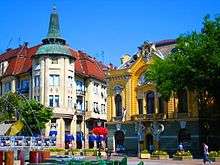
The City of Subotica is located on the north of the Republic of Serbia, along the main European corridors and between two rivers: the Danube and the Tisa. Rich cultural heritage assets, lavishly decorated buildings, multicultural spirit and European charm – these are the features that make this city distinctive. Subotica is known for its relaxed atmosphere, good food and quality wines.Festivals, events, concerts, vibrant cultural life all year long are a reason more to visit our city. On top of that, Subotica offers a lot of interesting places for rest and leisure, for activities around the lakes, on horse-farms, farmsteads, in forests and hunting areas.

Palić, the lake and the settlement by the same name are 8 kilometres east of Subotica. Palić offers something new, unrepeatable and enriching at any season. Outstanding facilities from the beginning of the 20th century: the Water Tower, the Grand Terrace, the Women’s Lido and the Music Pavilion, the splendid park, the well-known lake, peace and silence make Palić an ideal space for rest and relaxation. Currently Palić provides high category hotels, regenerated luxury and comfortable villas in the so-called “Palić style”, several lodgings and private boarding houses.Excellent restaurants and cafés, sport and recreational fields, three arranged beaches, a thermal pool, a Zoo, cycle lanes, walking paths, a set of versatile events, dynamic cultural life and entertainment possibilities and contents comprise the comprehensive offer of the Palić Tourist Centre.
Vršac

Vršac, a town of 40.000 inhabitants, is one of the oldest and most beautiful towns in Vojvodina. It is situated on the edge of the Panonian Plain, on the slopes of the Vrsac Mountain, only 14km far from the Romanian border. Coming here for a business visit (to some of Vrsac companies), sports visit (to the Centar Millennium) or just for pleasure sightseeing tours for all visitors is recommended. History, culture and tradition in Vršac are closely related to wine culture and that’s the main reason why you should come on “Wine road”.
While in Vrsac don’t miss to visit: the Bishop’s Palace from 18 century, City hall from 18 century, Catholic Cathedral “St Gerhard” from 1863, Orthodox Church St Nokolaj from 1785, Vrsac Tower from 14 century, museum, etc. You should also visit the famous theatre “Sterija”. You can also escape into green oasis in our main park, which makes people from Vrsac very proud on since it is the oldest in Vojvodina and dates back to 1797. As an ideal place for a break is Vrsac square, bursting with coffee shops, this represents a great mixture of various architectonic styles from 18 and 19 century.
Vršac is surrounded by mountains bringing fresh mountain air. Over 1750ha of vineyards are planted on the slopes of the Vršac Mountains. Company “Vršacki vinogradi” (Vršac vineyards) is open for sightseeing of the most spacious wine cellars in the Middle Europe. Near by villages Gudurica and Veliko Središte cherish wine tradition and numerous houses have private wine cellars. “Wine road” tour provides wine tasting and visits to wine cellars. For those adventurous visitors it can be recommended panoramic flight with one of the best Flight Academy in Europe.
Mountain resorts
Kopaonik
Kopaonik, the biggest mountain of the central Serbia, spreads its wide mountain - ridge 83 km. long, in the direction from the mountainous region over Mitrovica, to the north - west over the series of peaks higher than 1600 m., to the highest part of the massif called Ravni Kopaonik (Flat Kopaonik) with the peaks: Gobelja (1934 m), Karman Vucak (1936 m), Suvo Rudiste (1976 m) and Pancicev Vrh (Pancic Peak) (2017 m).
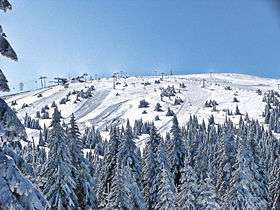
The northern border of the massif is separated from the massif of the mountain Zeljina by the rivers Josanicka reka and Koznicka reka.
The region's geology dates back 70 million years ago when the older sedimentary rocks were exposed to the strong tectonic movements and to the volcano activity which caused dent and issue of the magmatic cliffs. This is why Kopaonik distinguishes itself by its geological structure of rocks of different inception and age (granites, serpentinites, slates, marbles, andesites, lime - stones). The later processes of erosion during past millenniums created present-day outlines of the relief of Kopaonik. Kopaonik's national park was established in 1981. Deciduous forests and native coniferous woodland make up most of the forested land in the park. Kopaonik has many species of birds, such as rock partridge, scops owl, red-backed shrike, and the wood lark. Soil erosion is great threat as there is a lot of logging and deforestation in the park. Sports and recreation are key factors to the tourism of Kopaonik. Kopaonik is mainly a destination for skiing and snowboarding. There are various other activities as well, such as tennis. Other features which attract tourists are a luxurious hotel, and entertainment. Kopaonik has many cafes, bars and night clubs.
Zlatibor

Zlatibor is an important tourist area of Serbia, with resources for health tourism, skiing and hiking. The main city of the region is Užice, located at the foothills of the mountain, and most of the area belongs to the municipality of Čajetina.Town of Zlatibor emerged from a group of vacation homes into a full-fledged urban location.
Situated at an elevation of just over 1,000 metres, Zlatibor is a climatic resort, characterized by a cool alpine climate, clean air, long periods of sunshine during the summer and a heavy snow cover in winter. Tourist facilities include modern hotels, holiday centers and cottages, sports grounds and skiing tracks. Zlatibor in recent years its tourist offer is completed by numerous and diversified content. Built a large number of sports courts, outdoor and indoor swimming pool, ski lifts and ski trails. Governed the lake, created a new mall, market, bus stop and others. Also, built a large number of new hotels and resorts, apartments, restaurants.
Zlatibor offers for vacation and recreation through various forms of recreational, sports, hunting, health, and congress tourism. About 200,000 visitors a year, makes about 1,000,000 overnight accommodations on Zlatibor.
Zlatar
Mountain Zlatar is located between rivers Lim, Milesevka and Bistrica. The highest peak is 1627 meters high Golo Brdo. In its name all the characteristics are said: fragrant meadows and clear lakes surrounded by pine and birch, blend of Mediterranean and mountain climate, the number of sunny days, the air rich in terpentine and ozone, endless sights.
Because of its morphology, climate, fauna and authentic nature mountain Zlatar is one of the main destination for tourists. One can find sport and recreation, pleasure, health and wellness, hunting, convention, excursions, and village tourism there. "Institute for prevention, treatment and rehabilitation of cardiovascular diseases and arterial blood pressure" are situated on Zlatar. During winter ski trail 800 meters long with a ski-lift 420 meters long is available for guests, all of which is located 200 meters away from the hotel "Panorama". There is a possibility to rent ski equipment. Not far from the mountain Zlatar, guest can visit the canyon of the river Uvac, inhabited by relict bird species of the Balkans - griffon vulture. This nature reserve, as well as ecological region scenery, clear waters rich in fish, and rafting and photo-tourism attract many visitors. Three artificial lakes Zlatarsko, Sjenica and Radoinjsko, and monasteries Mileseva and Banja, wooden church in Kucan and Radijevici complete the tourist offer of the mountain Zlatar.
Danube
The Danube is the most popular river in the world for river cruises, and is a major asset of Serbia’s tourism industry, with Serbia's two largest urban centres – Belgrade and Novi Sad – located on its banks.
Along its 588 km course through Serbia, the Danube passes through the picturesque Vojvodina flatlands and the national parks of the Fruška Gora and Đerdap. Besides its natural wealth, there are many sites of cultural and historical value spread out along its banks such as Smederevo and Golubac, archeological sites such as Viminacium and Lepenski Vir.
Natural wonders

Devil's Town
Đavolja Varoš (Serbian Cyrillic: Ђавоља варош, meaning "Devil's Town") is a peculiar rock formation, located in south Serbia on the Radan Mountain near Kuršumlija. It features 202 exotic formations described as earth pyramids or "towers", as the locals refer to them. They are 2-15 m tall and 4-6 m wide at the base. These formations were created by strong erosion of the soil that was scene of intense volcanic activity millions of years ago. [4] Most of the towers have "caps" or "heads" of andesite, which protect them from further erosion.[5]
Since 1959, Đavolja Varoš has been protected by the state and a 1995 decision of the Serbian Government declared it a major natural monument subject to category one protection.[6]
A natural spring is located beneath the formations and has a high mineral concentration. There are two springs: Đavolja voda (Devil’s Water), with extremely acidic water (pH 1.5) and high mineral concentration (15 g/l of water), and Crveno vrelo (Red Well).[6]
Deliblato Sands

The largest European continental sandy terrain. Flora is characterized by 1,000 plant species which build the sand, steppe, forest, marsh and water plant communities. The larger part of the Deliblato Sands is covered with acacia and pine forests. The most typical wildlife species in the central part are: the steppe peony, Virgilian oak, endemic insect tentyria and steppe gerbil, while the Danube area is home to pygmy cormorants and thousands of migratory birds.
One of the last deserts in Europe, stretching over 300 square kilometers, Deliblato sands was created by the wind that brought the sand.
The absence of surface water and the squally wind “košava” blowing at hurricane speeds of 180 kilometers per hour contribute to the true sense of being in the desert. Due to its diverse flora and fauna this area was declared the special nature reserve. Deliblato sands covers 300 square kilometers, while the sand dunes are surrounded by fertile loess hills inhabited by numerous plant and animal species. This is a true paradise for all nature explorers looking for an adventure in truly unique ecosystem.
Statistics
In the 1980s Serbia was an important tourist destination in the Balkans. Overnight stays were almost 12 million per year, of which about 1.5 million were by foreign tourists. The events surrounding the break-up of Yugoslavia led to a substantial decline in both leisure and business tourism.[7]
In the twenty-first century tourism began to recover; the number of overseas visitors was 90% higher in 2004 than it had been in 2000, and revenue from foreign tourism more than tripled between 2002 and 2004, to about 220 million US dollars.[7] By 2010 revenue from international tourism had grown to 605 million euros. 2014 was a significant year for foreign tourists, their number has surpassed one million. Many of the visitors were from other Balkan countries – Bosnia and Herzegovina, Montenegro, Slovenia and Croatia – and from Europe, principally Germany, Russia, Italy and Turkey. From non European countries, most tourists come from the United States, China, Australia and South Korea.[8]
Arrivals by year
|
Arrivals by country
|
Gallery
.jpg) Ski slopes on Stara Planina.
Ski slopes on Stara Planina. Uvac Kanyon.
Uvac Kanyon. Felix Romuliana, UNESCO heritage site.
Felix Romuliana, UNESCO heritage site. Studenica monastery, UNESCO heritage site.
Studenica monastery, UNESCO heritage site.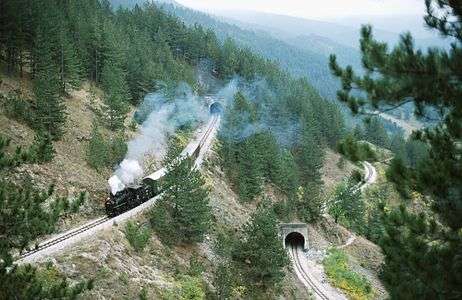 Šargan Eight, narrow-gauge heritage railway.
Šargan Eight, narrow-gauge heritage railway.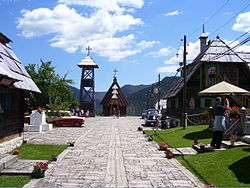 Drvengrad, ethno village.
Drvengrad, ethno village. Vlasina Lake.
Vlasina Lake.
See also
- Visa policy of Serbia
- Seven Wonders of Serbia
- List of World Heritage Sites in Serbia
- Tourism in Vojvodina
- Tourism in Kosovo
References
- 1 2 Serbia, in: Alain Dupeyras (ed.) (2012). OECD tourism trends and policies 2012. Paris: Organization for Economic Cooperation & Development. ISBN 9789264177567. p. 403–407.doi:10.1787/tour-2012-56-en
- ↑ http://www.ekapija.com/website/sr/page/1454968/Cilj-dr%C5%BEave-da-turizam-%C4%8Dini-9-BDP-a-U-prva-%C4%8Detiri-meseca-2016-u-Srbiji-oko-300-000-stranih-turista
- ↑ Visit Serbia
- ↑ Đavolja varoš, National Tourist Organization of Serbia (English)
- ↑ The Djavolja Varos (Devil's Town) Natural Landmark, UNESCO World Heritage
- 1 2 About Devil's Town, Official website
- 1 2 Marat Terterov (ed.) (2006). Doing business with Serbia, second edition. London: GMB Publishing. ISBN 978-1-905050-14-7. p.177.
- ↑ 2014 statistics
- ↑ 2003 statistics
- ↑ 2004 statistics
- ↑ 2005 statistics
- ↑ 2006 statistics
- ↑ 2007 statistics
- ↑ 2008 statistics
- ↑ 2009-2013 statistics
- ↑ 2014 statistics
- ↑ 2014 statistics
- ↑ Statistical Yearbook of the Republic of Serbia – Tourism, 2015
Further reading
- Ana Nikolov (2005-07-29). "Beograd – grad na rekama". Institut za Arhitekturu i Urbanizam Srbije. Retrieved 2007-06-05.
- Beoinfo (2005-08-04). "Prirodno dobro "Veliko ratno ostrvo" stavljeno pod zaštitu Skupštine grada" (in Serbian). Ekoforum. Retrieved 2007-06-05.
- Seth Sherwood (2005-10-16). "Belgrade Rocks". The New York Times. Retrieved 2007-05-19.
- Barbara Gruber (2006-08-22). "Belgrade's Nightlife Floats on the Danube". Deutsche Welle. Retrieved 2007-05-19.
- "Slovenci dolaze u jeftin provod" (in Serbian). Glas Javnosti. 2004-12-21. Retrieved 2007-07-10.
- "U Beograd na vikend-zabavu" (in Croatian). Večernji list. 2006-01-06. Archived from the original on 2006-01-06. Retrieved 2007-06-15.
- Gordy, Eric D. (1999). "The Destruction of Musical Alternatives". The Culture of Power in Serbia: Nationalism and the Destruction of Alternatives. Penn State Press. pp. 121–122. ISBN 0-271-01958-1. Retrieved 2007-07-10.
- "Klub Studenata Tehnike - O nama" (in Serbian).
- Scurlock, Gareth (2008-11-04). "Europe's best nightlife". London: Official site. Retrieved 2008-04-11.
- "The world's top 10 party towns". The Sydney Morning Herald. 2009-11-09. Retrieved 2010-03-16.
- "Exit Festival Official Websiyr".
External links
| Wikivoyage has a travel guide for Serbia. |
- National Tourism Organization of Serbia
-
 Media related to Tourism in Serbia at Wikimedia Commons
Media related to Tourism in Serbia at Wikimedia Commons
